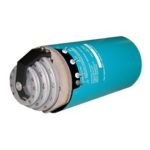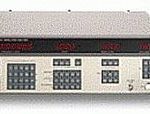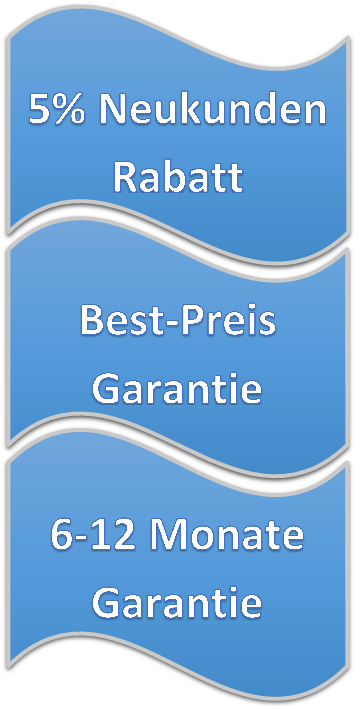Beschreibung
The GenRad 1982 Precision Sound-Level Meter and Analyzer combines measurement versatility with simplicity of operation to give you a practical, economical solution to a variety of noise measurements. Now you can use a single instrument, without plugin filters or other add-on accessories, to make A-, B-,or C-weighted sound-level measurements from 30 to140 dB, octave-band analyses from 31.5 Hz to 16 kHz,and peak or impulse noise measurements.
The GenRad 1982 Precision Sound-Level Meter satisfies many noise-measurement requirements. In a typical industrial facility, a company safety engineer, noise-control specialist or hired consultant may be required to makeseveral types of noise measurements in a single day. With the GenRad 1982, the following measurements can be made without the need for any accessories or additional instrumentation.
•A-weighted sound-level measurements to locate noise-hazard areas.
•Peak and impulse measurements of short-duration noises caused by punch presses, metal-stamping equipment, riveting machines, etc.
•Octave-band analyses required for: Ear protector selection, Noise-barrier material selection, Noise-source identification for engineering control programs and Audiometric booth-site Surveys.
Beyond its many uses in industrial safety and hearing conservation programs, the 1982 has broad application in:
•General noise measurements made by acoustic consultants.
•Environmental noise programs at the federal, state,and community Levels
The GenRad 1982 Precision Sound-Level Meter is easy to use. With all of its versatility, the 1982 is extremely easy to use and does not require special technical training. Switching its operating mode from sound-level measurement to octave-band analysis, to peak or impulse measurement requires only the push of a slide switch or turn of a knob.
Precision sound-level measurement. The 1982’s conformance to ANSI Type 1 and IECSound-Level Meter Standard 651, Type 1, is your assurance of the most accurate performance offered in a sound-level meter. To make a measurement you simply switch to the weightingand meter response (fast or slow) you desire, switch on the meter and set the attenuator to the range that gives you an on-scale reading. Then you read the measured levels from either the digital display or analog meter.
Octave-band analysis. The octave-band filters in the 1982 are the most accurate offered in a portable instrument. This assures a high degree of confidence in your octave band measurements. In addition, the 1982 eliminates the often confusing two-attenuator system used in other instruments. The GenRad 1982 Precision Sound-Level meter features a single attenuator which allows you to set the range desired, switch on the instrument, and read the measured level from either display. Should the range level be set too low,an overload light on the meter face alerts you to change to a higher level, thus avoiding incorrect readings.
Peak and impulse measurement. The1982’s peakdetector is the fastest available for measuring impact-or impulse type noise. With a 50-microsecond rise time, the detector ensures reading the true peak of the signal, up to 140dB. An accessory 10-dB microphone attenuator extends this range to 150 dB. An impulse detector which meets IEC 651 is also built-in. A significant feature of the 1982 allows you to capture and hold the peak or rms reading on the digital display without inhibiting successive readings on the analog meter. This lets you take ambient level readings immediateley after the impact occurs without losing the peak reading. Also, in this mode it is not necessary to wait for the peak detector to decay before reading a lower level peak. Apress of the capture button resets the long decay time of the peak detector allowing you to read a lower peak immediately following the previous measurement. This is especially useful when making measurements of forging hammers, metal stamping, and similar operations.
Easy, accurate reading. The digital display allows quick, accurate, error-free reading with a resolution of 0.1 dB. Set the display mode to continuous and the digital display tracks the analog meter. Other operating modes allow you to „capture and hold“ a reading on the digital display. You can automatically capture and hold the highest level measured during a measurement period or push a button to capture the level at a specific moment during the period. In either of these modes, the analog meter continues to track the ambient Level. You will find the analog meter easy to read, also. It is calibrated linearly in 1-dB increments and the dB levels are clearly visible on the meter face.
Accessories available. The 1982 and a calibrator will satisfy most measurement requirements. For those contemplating noise measurements where a remote micro phone location is required, a calibrator, carrying case, e•A versatile, all-purpose instrument precision sound-level meter peak and impulse noise meter octave-band analyzer.
•Ideal for OSHA and a broad variety of noise measurements
•Digital and analog displays for error-free reading
•Compact and lightweight (3 lb) for easy handling
•Approved by MSHA and NIOSH xtension cable should be ordered to provide a complete System.




